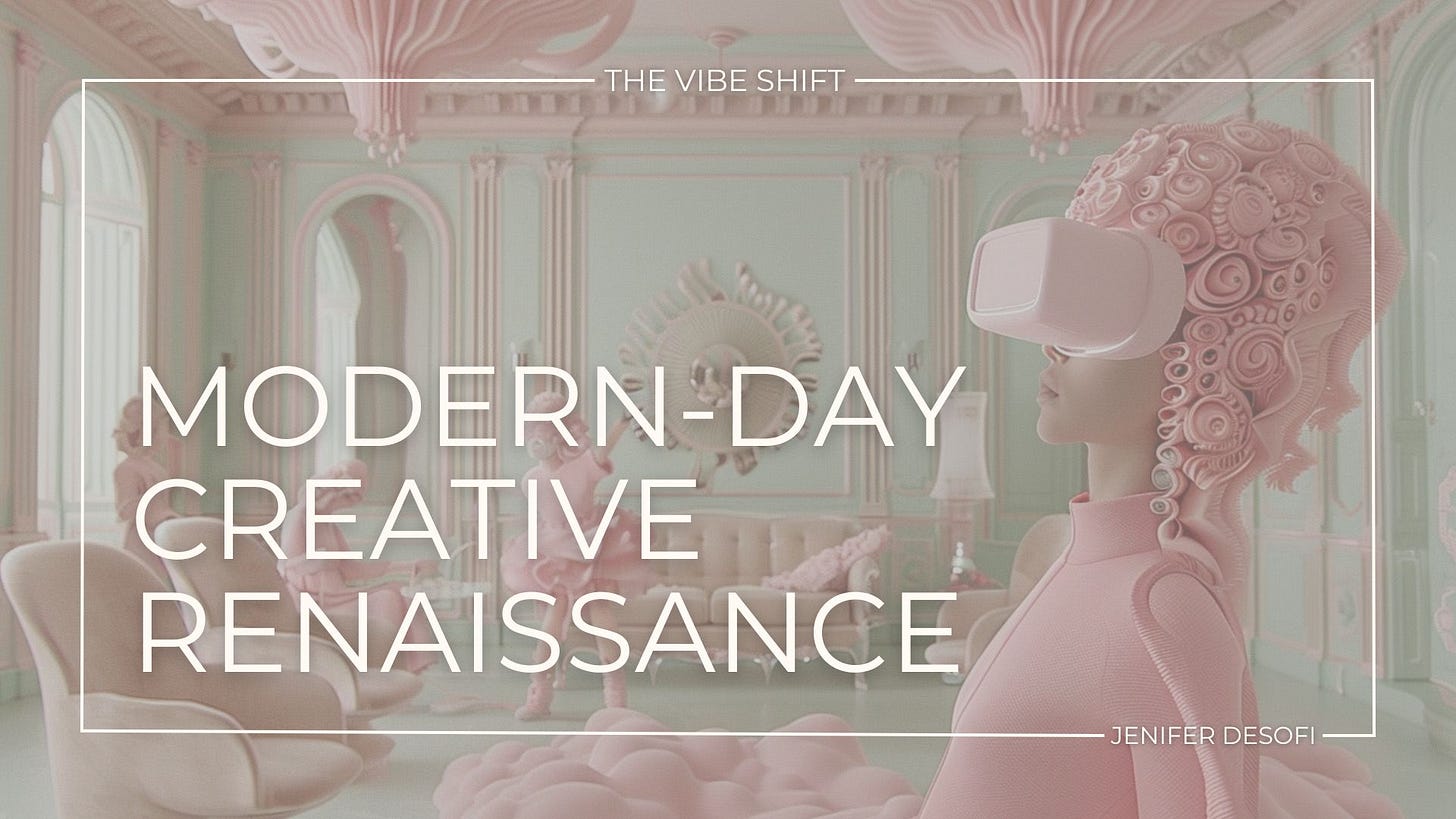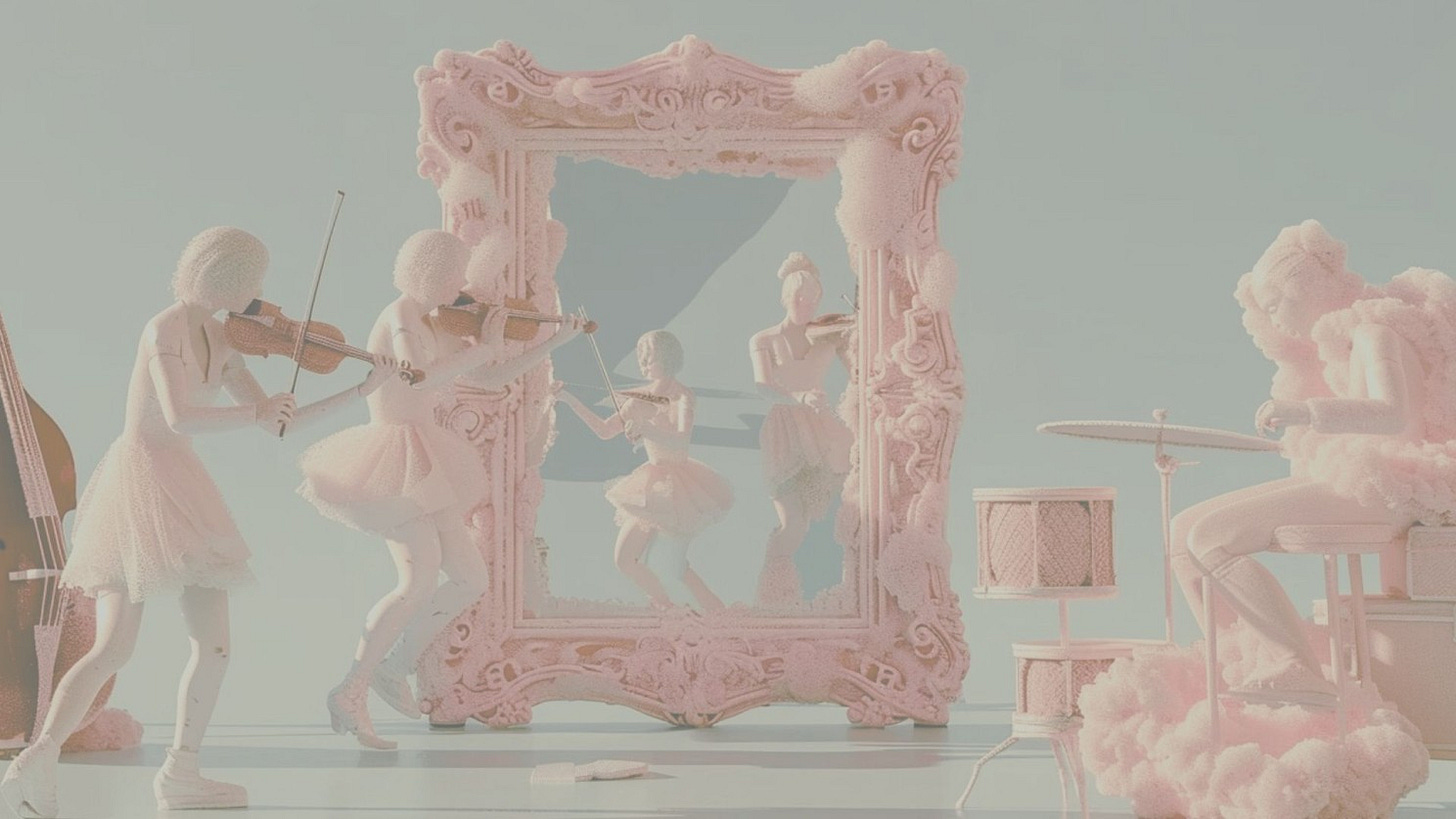THE OPTIMIZATION CEILING
I love productivity as much as the next business leader, but let's be honest: we've reached peak efficiency.
After two decades of relentless optimization—of our businesses, communications, products, and even our daily lives—we've hit a ceiling.
The law of diminishing returns has caught up with us. Our pursuit of algorithmic optimization has created a world where everything feels increasingly monotonous: predictable messaging, formulaic content, commoditized products, and homogenized experiences.
At the same time, we’re seeing a massive shift in what people value. We are moving away from attention and toward connection. People are craving authenticity, cultural relevance, and deep experiences.
This isn’t a temporary trend; it’s a fundamental economic shift that will bring creativity back into balance with productivity—because efficiency alone will no longer drive sustainable results.
The next phase of growth requires a return to radical creativity; it requires a MODERN-DAY CREATIVE RENAISSANCE (#MDCR).
HISTORY ON REPEAT: RENAISSANCE PATTERNS
History doesn't just rhyme—it provides a roadmap. The conditions that sparked the original Renaissance bear striking similarities to our current moment:
***Attn: history geeks, you’ll enjoy this next section***
TECHNOLOGICAL LEAPS DEMOCRATIZE CREATION
THEN: The printing press spread ideas at unprecedented speed, allowing knowledge to circulate beyond elite circles.
NOW: AI and digital tools place creative capabilities in everyone's hands, enabling expression unimaginable a generation ago.
POWER SHIFTS FROM INSTITUTIONS TO INDIVIDUALS
THEN: Feudalism's collapse redistributed influence to new voices across society.
NOW: Creator platforms and decentralized technologies transfer power from traditional gatekeepers to independent thinkers.
CULTURAL FOCUS MOVES BEYOND SURVIVAL
THEN: Humanism redirected society from mere existence to expression, beauty, and innovation.
NOW: Having optimized the functional, we crave meaning, authentic connection, and creative exploration.
NEW PATRONAGE SYSTEMS FUND INNOVATION
THEN: The Medici family and others invested in creative experimentation without immediate practical returns.
NOW: Forward-thinking leaders and organizations create space for innovation that can't be justified on a quarterly spreadsheet.
ASIDE: The Medici saw creativity as a long-term investment, not a line item. Today’s business leaders are in the same position—whether they realize it or not. The question isn’t whether to invest in creativity, but whether they’ll be the ones shaping the future or playing catch-up.
This all sounds super familiar, right?
We're living through the same macro conditions that once sparked humanity's greatest creative explosion.
The original Renaissance wasn't just an artistic movement but a fundamental economic and cultural transformation that reshaped humanity's trajectory….
…and, the same opportunity stands before us today.
THE MDCR BUSINESS CASE: CREATIVITY MULTIPLIER EFFECT
The return on creative investment isn't linear—it's exponential.
When creativity becomes a core strategy, rather than an occasional initiative, it delivers multiplying returns.
Compounding Creative Interest
I know how alluring short-term gains can be. The immediate dopamine hit of quick wins and quarterly results is hard to resist.
But like financial investments, creativity compounds over time. The initial investment may not show immediate returns, but the longer you invest in it, the more dramatically exponential the results become.
For businesses, this isn’t theoretical; it’s measurable! The organizations and leaders who recognize this multiplication effect aren't just making space for creativity—they're protecting it as their most valuable asset.
The Medici understood this centuries ago. They didn’t just support creativity—they funded bold experimentation, backed unproven ideas, and created space for innovation before it had a business case.
Their legacy wasn’t just great art and extravagant parties; it was economic power, cultural influence, and industry-shaping breakthroughs.
That same responsibility and stewardship now falls on today’s leaders—call us The Modern Medici (no pressure).
Creativity's Business Impact
During my time at Levi's and Disney, I experienced the power of creativity-as-strategy firsthand. I had the privilege of leading businesses and organizations where I not only encouraged creativity but also protected it (quite fiercely).
The impact was undeniable:
We reinvigorated stale IP, shifting brands from irrelevance back to the center of culture.
We revolutionized clothing categories with breakthrough product innovation that redefined entire spaces and generated billions in revenue.
We engineered operational innovations that did the seemingly impossible—saved money AND the planet.
We unearthed unique and deeply ownable ways to connect with consumers, finding white space that competitors never saw coming.
But here’s the thing: this kind of impact doesn’t happen accidentally. We leaders must intentionally create the conditions where creativity can thrive. We’re as responsible for fostering creativity as we are for delivering bottom-line results—In fact, I believe they’re symbiotic!
SPARK THE RENAISSANCE: YOUR PART IN THE MOVEMENT
My sales pitch to you dear reader:
The Modern-Day Creative Renaissance isn't some abstract cultural shift happening elsewhere. It's a movement you can help spark today. Think about the big and small ways you can spark more creativity in your daily work.
Create Space for Unstructured Thinking: When was the last time you gave yourself permission to simply think? The most valuable ideas often emerge when we step away from optimization mode.
Cross-Pollinate Disciplines: Who could you invite to your next creative discussion that would bring a different perspective? The original Renaissance thrived on cross-disciplinary thinking, which brought together diverse perspectives and expertise.
Fund the Seemingly Impractical: What creative initiative could you champion that others might dismiss as "nice to have"? Be a modern Medici! Support creative initiatives that don't have an obvious short-term ROI but possess real potential.
Choose Different Over Perfect: What bold, differentiated approach have you been hesitating to pursue because it doesn't fit the "optimized" path? Resist the urge to optimize toward sameness. Embrace the power of distinctive thinking, because uniqueness is your advantage.
We stand at a pivotal moment. The optimization era delivered remarkable gains, but its returns are diminishing. The next wave of business, culture, and human potential growth will come from unleashing creativity at scale.
The question isn't whether we'll see a Modern-Day Creative Renaissance.
The question is:
Will you help spark it?
AND
What will we create together?
-Jen







